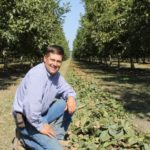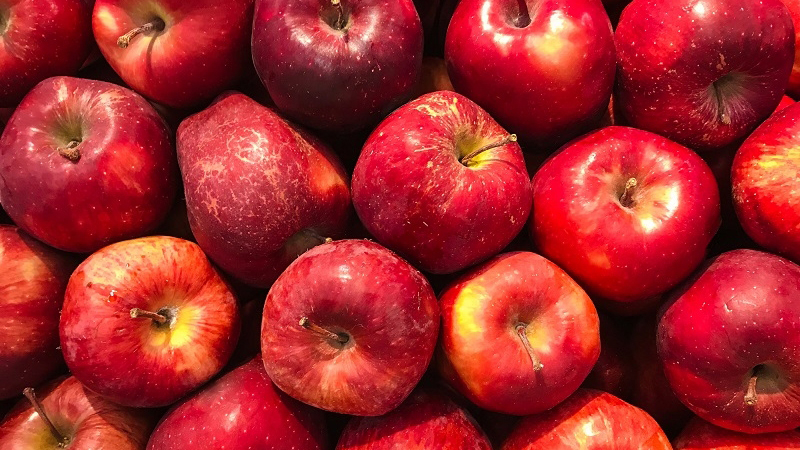Advisory Board Says Invasive Pests, Pricing Among 2018 Challenges
(Editor’s Note: As part of our State of the Industry coverage, we asked members of American Fruit Grower® and Western Fruit Grower® magazines’ Editorial Advisory Board for their thoughts on what fruit and nut growers might see in 2018. Here are a few of their insights.)

Mario Miranda Sazo
Cornell University Extension Specialist,
Newark, NY
More university researchers, tree fruit specialists, venture capitalists, consultants, and innovative growers will bring Precision Orchard Management (POM) to the forefront in 2018 and beyond. We recently measured this strong interest through an online survey of apple growers about POM. This nationwide effort was led by colleagues Dave Brown and Karina Gallardo from Washington State University. We got 101 responses from New York (42), Michigan (16), Oregon (4), and Washington (39). Respondents not only represented a diverse range of apple production areas in these states, but also a wide range of orchard sizes, from 15 to 1,000 acres. More than 65% of respondents are considering investments in precision agriculture technologies in the next few years.
 Nat DiBuduo
Nat DiBuduo
President and CEO, Allied Grape Growers
Fresno, CA
The California winegrape industry as a whole is still alive and well, though this past fall we went through a California legislative year that continues to be unfriendly not only to agriculture but to business in general. Besides lowering the agriculture overtime rule to an eight-hour day and 40-hour week and paying for non-productive time, we had many major hardships. Besides the bad legislation, we’ve gone through horrible fires. Once again we look to the sky for rain, hope for some reservoir storage to be built — we’ve voted for it — and a mild spring and summer so we can do it all over again in 2018. That’s why they call us FARMERS. We are optimistic it’s going to be better this year!
 Jon Clements
Jon Clements
University of Massachusetts Extension Educator
Belchertown, MA
The new apple variety bandwagon will begin to slow. Winners and losers will emerge. ‘Cosmic Crisp’ will play a role. Buying habits of large retailers are changing, and food safety, buy local, and eco-grown are where it’s at. If you are not playing that game, or at least giving the perception that you are, you will be left behind.
 Richard Matoian
Richard Matoian
Executive Director, American Pistachio Growers
Fresno, CA
With the economy improving in the U.S. and with the middle class continuing to grow in many parts of the world — combined with the recognition of tree nuts as a good source of plant-based protein (as compared with animal-based protein) — many more consumers will look to purchase tree nuts, and total nut consumption will continue to increase.
 Win Cowgill
Win Cowgill
Crop Consultant, Win Enterprises International, Retired Extension Advisor
Baptistown, NJ
Spotted lanternfly is a destructive pest that spreads rapidly and can be devastating to apples and grapes. With its presence in all Pennsylvania counties adjacent to New Jersey and Delaware, I expect it to jump the Delaware River in 2018 and become an orchard pest in those states as well. Dr. Megen Muelbauer, County Agent, Rutgers Cooperative Extension, NJ, confirmed a spotted lanternfly on a Christmas tree bought in Pennsylvania and brought back to New Jersey. Logically there are egg masses on other Pennsylvania-grown Christmas trees imported to New Jersey, hastening the argument that spotted lanternfly will soon be a new invasive pest for Garden State grape and tree fruit growers.
 Jon Amarel,
Jon Amarel,
Partner of Reason Farms
Yuba City, CA
“The California prune industry will continue to segregate into growers who target value-added marketers and those who sell into the global world commodity arena. Growers will only attain higher farm gate prices if they focus on quality ― greater sizes and sugars. Global competition has narrowed the prices growers receive around the world. California prunes need to differentiate themselves from the rest of the world. This starts with the growers and continues all the way through processors, marketers, retailers, and ends with our consumers. Like other industries, we need to focus on fostering and strengthening our relationship with our consumers.”
 Kevin D. Moffitt
Kevin D. Moffitt
President and CEO, Pear Bureau Northwest
Milwaukie, OR
Big changes lie ahead on the retail front, as there will be more aggressive openings of limited assortment stores such as Aldi and Lidl. Many people are watching Lidl closely to see if they can adapt to and succeed in the U.S. market or not. Amazon will be aggressive in their vision for Whole Foods and it will most likely be very disruptive to many retailers. Online shopping will continue to gain steam. Click and collect will grow fastest within this realm. Meal kits will evolve and continue to be popular with more stores partnering to sell them in store or developing their own kits. Expect another big retail merger in the next 12 to 18 months.
 Nikki Rothwell
Nikki Rothwell
District Horticulturist, Michigan State University Extension
Traverse City, MI
I expect we will see a few changes in orchard systems here in Michigan. Spotted wing drosophila (SWD) has been really challenging growers in tart cherry, particularly in Northwest Michigan, and as a result, I think we are going to see older tart cherry blocks pushed out. The costs and fatigue to control this pest are not economically sustainable on old blocks, and some growers will change over orchard systems to other crops. At our 2017 SWD Summit, four of out of five growers on a panel stated they would be removing tart cherry acreage, and they would plant that land to asparagus or high-density apples.
On a more positive note, our 2017 data showed that pruning alone reduces the pressure from SWD. We had a 40% reduction in SWD larvae in trees where we removed six to 10 limbs. Many growers will likely increase pruning over this winter season to help with SWD control in 2018.

David Doll
Pomology Advisor, University of California Cooperative Extension
Merced, CA
We’ll see record nut crops in 2018 across California. The combination of increased acreage and higher than average yields will lead to record-setting crops for almonds, pistachios, and walnuts. Late spring rains will attempt to damper the crops, but will only provide cooler conditions, which increase kernel size and quality. Insect pressure will be down from last year due to implementation of sanitation practices. Yields and the lowering value of the dollar lead to increased nut exports and prices, leading to record revenues for many operations across the state. The only drawback is that a weaker dollar usually means a downturned economy.









